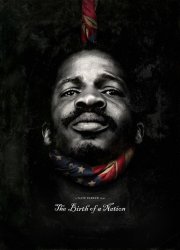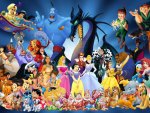Questioning the Legitimacy of the Academy by Willie Jones, KIDS FIRST! Film Critic age 16
Monday, October 31st, 2016 The Birth of a Nation writer, director and star Nate Parker has received much controversy for a scandal at his former college. His merit as a person is in question, even though he was found innocent. His film has received positive reviews from critics, so his artistry is not in question. The Academy is not the Nobel Peace Prize committee. They are not voting on how good or bad a person is, they are voting on their cinematic work. How do I know? A man who was found guilty on invidious charges was given an Oscar for Best Director, for his work on The Pianist. And that was someone found guilty. Woody Allen continues to get nominated for his work despite allegations associated with him. So why is it that Academy members declined to see a screening of The Birth of a Nation because of Nate Parker’s scandal when they have given Oscars to those found guilty and with equally troublesome scandals? I’m not saying race is the reason, but I’m not ruling it out. Let’s analyze this further.
The Birth of a Nation writer, director and star Nate Parker has received much controversy for a scandal at his former college. His merit as a person is in question, even though he was found innocent. His film has received positive reviews from critics, so his artistry is not in question. The Academy is not the Nobel Peace Prize committee. They are not voting on how good or bad a person is, they are voting on their cinematic work. How do I know? A man who was found guilty on invidious charges was given an Oscar for Best Director, for his work on The Pianist. And that was someone found guilty. Woody Allen continues to get nominated for his work despite allegations associated with him. So why is it that Academy members declined to see a screening of The Birth of a Nation because of Nate Parker’s scandal when they have given Oscars to those found guilty and with equally troublesome scandals? I’m not saying race is the reason, but I’m not ruling it out. Let’s analyze this further.
One Academy voter was quoted as saying that they wouldn’t see the movie because there have been too many movies with the subject of slavery recently. Since Amistad was a major Oscar player in 1997, I can only think of three major movies that deal with slavery in the last 10 years: Django Unchained, 12 Years a Slave, and The Birth of a Nation. Even if that’s “too many,” the voters who use that as an argument must not mind seeing movies about or with WWII as the backdrop. In the past 10 years there’s been:  Atonement, Inglorious Bastards, Fury, The Imitation Game, Unbroken, The King’s Speech. And that list doesn’t include the, soon to be released Hacksaw Ridge and next year’s Dunkirk. That’s already more than twice the amount of films dealing with slavery and I could still go on. So why the complaint about too many movies on slavery, but not a word on the multitude of WWII movies that get nominated for numerous Oscars.
Atonement, Inglorious Bastards, Fury, The Imitation Game, Unbroken, The King’s Speech. And that list doesn’t include the, soon to be released Hacksaw Ridge and next year’s Dunkirk. That’s already more than twice the amount of films dealing with slavery and I could still go on. So why the complaint about too many movies on slavery, but not a word on the multitude of WWII movies that get nominated for numerous Oscars.
Beyond the skeptical excuses given by these Academy members for not seeing the film, how about basic integrity? If their job is to vote for the best films of the year, why wouldn’t they see as many films as possible? It’s their job and the purpose of attending a screening. The very merit of the Academy Awards takes a shot with the knowledge of this news. Academy voters purposely not seeing a film because of ludicrous reasons that they’ve only applied this one time to this filmmaker and this film. No one refused to see Midnight in Paris. No one refused to see Carnage. But they’ve refused to see Birth of a Nation. Furthermore, the Academy’s merit is also challenged by the fact that their voters have a history of voting for things they haven’t seen. I’m sure you’ll remember when news broke out that two anonymous voters admitted to having voted (ironically enough) 12 Years a Slave for Best Picture despite having not seen it. And that’s for Best Picture; imagine how many of them see the films nominated for Animated Short or Foreign Film.
Personally, I think their reasons for not seeing Birth of a Nation are absurd. Their voting history goes against any and every excuse they could possibly use. Too many movies on slavery lately? Yet, they continue to watch and nominate WWII movies. The filmmaker is too controversial? They keep nominating and awarding Woody Allen and Roman Polanski. The film is too violent or graphic? They recently nominated The Revenant, the aforementioned 12 Years a Slave and The Wolf of Wall Street. But beyond that, the most upsetting part has to be their lack of care for their merit and responsibility. These are people that vote for the biggest award in the film world. Careers are affected, legends are made and dreams are made or broken. Yes, I’m well aware that art is subjective and that winning an Oscar isn’t measurable of talent or deservedness, but it does have its merits. There is a certain seriousness and importance that an Academy Award poses. In a  way, it separates the wheat from the chaff. It cements Hollywood legends and greats and immortalizes films. That’s a responsibility movie buffs and cinema lovers don’t take lightly. So we expect that voters for the Academy Awards would take the time to actually see as many films as they can see in order to for their vote to reflect the most educated opinion possible.
way, it separates the wheat from the chaff. It cements Hollywood legends and greats and immortalizes films. That’s a responsibility movie buffs and cinema lovers don’t take lightly. So we expect that voters for the Academy Awards would take the time to actually see as many films as they can see in order to for their vote to reflect the most educated opinion possible.
I contend that we should write the Academy. We need to make the Academy and these voters aware that we know they are not giving their all in undertaking their responsibilities. Their hypocritical excuses for excluding certain films over another will not be tolerated. If they are unwilling to do what it takes to make the most informed vote possible, then why should we be willing to watch their show and respect their institution? Whether they are honestly critical about Nate Parker’s allegations and that is keeping them from watching the film or, for racial reasons, they are shirking their duties as voters, their vote must not be compromised. And we, as fans of cinema and the Oscars cannot allow it. Pick up your pen and write them.






